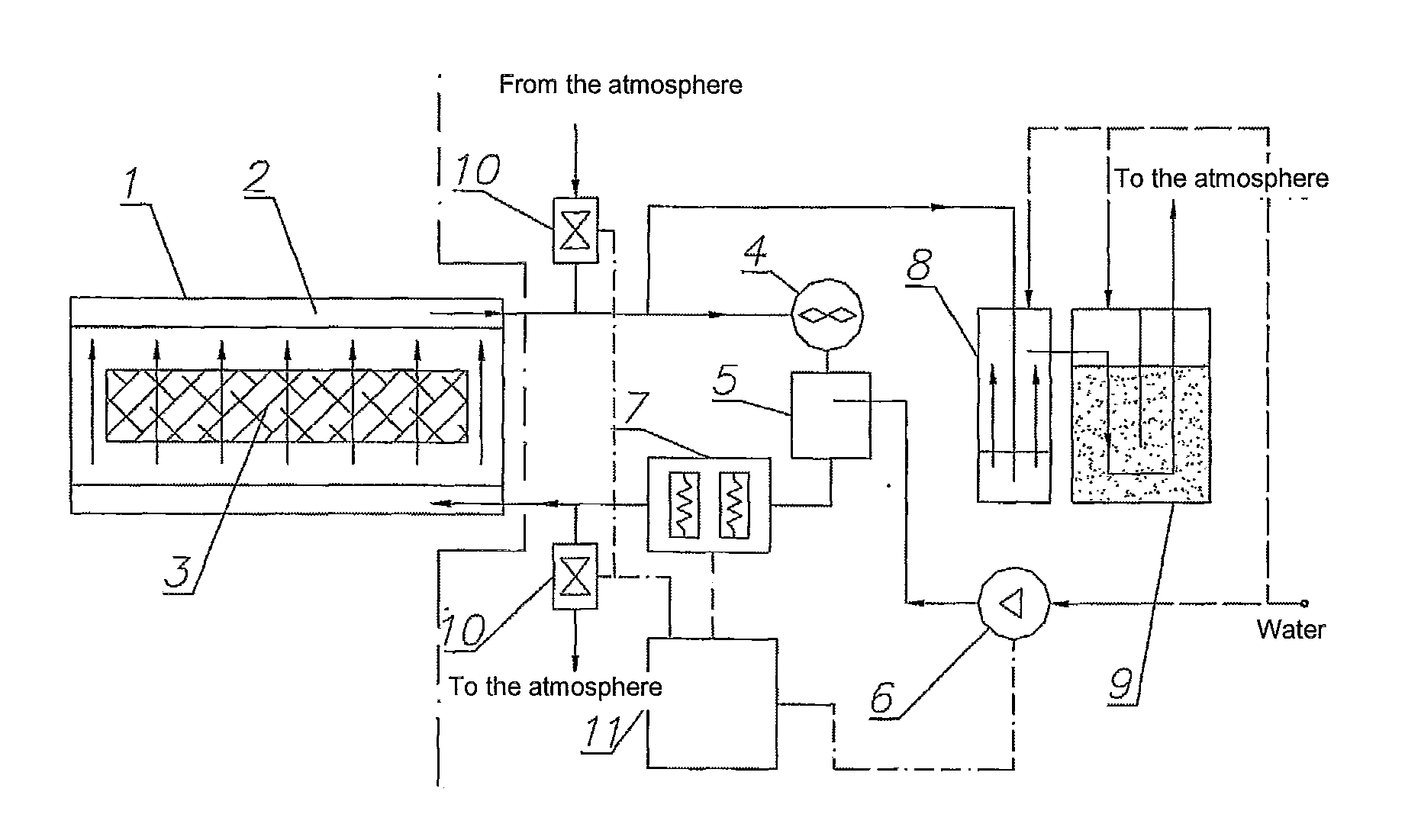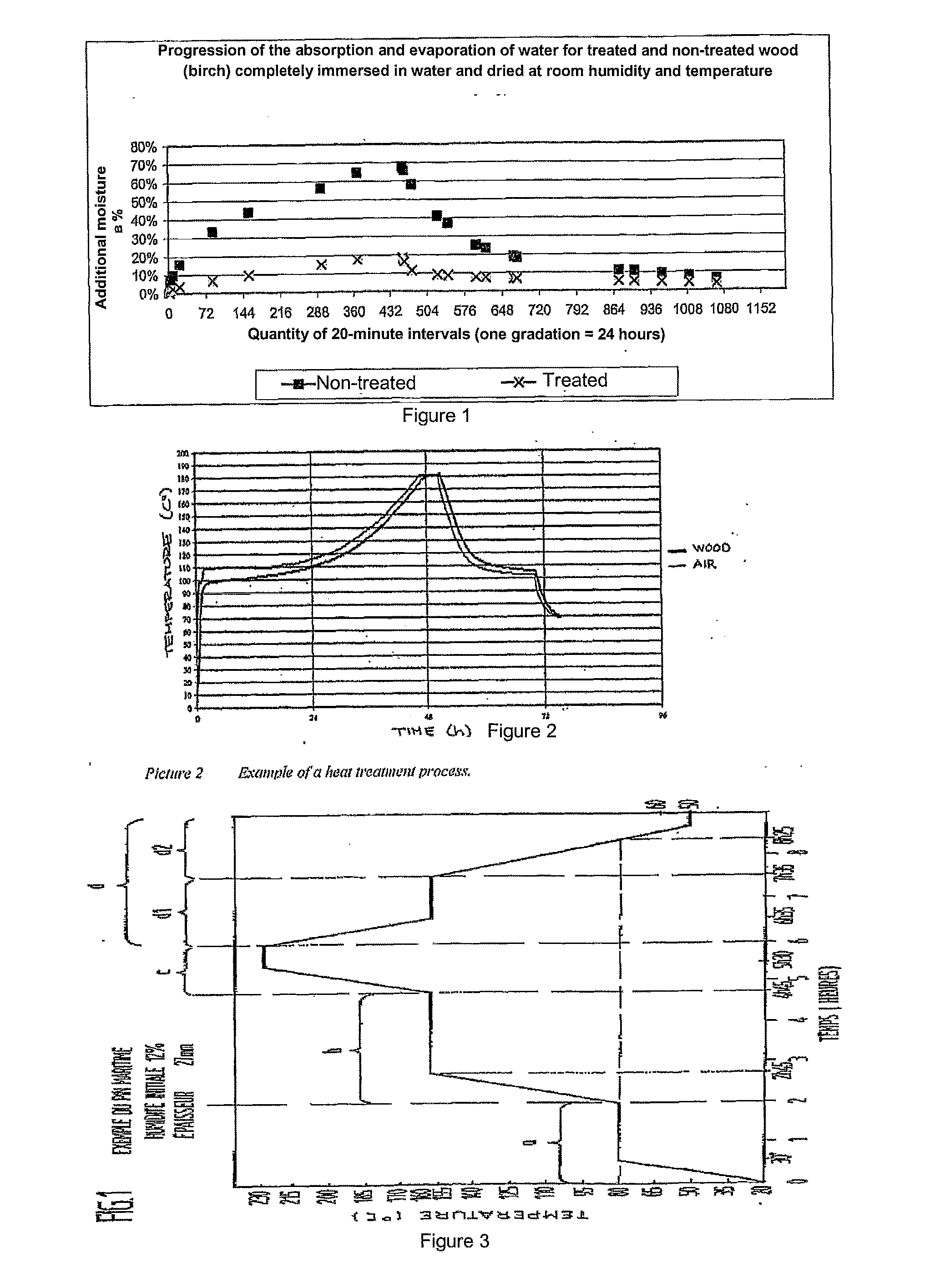Method for wood heat treatment and a device for carrying out said method
a wood and heat treatment technology, applied in the field of wood heat treatment, can solve the problems of low degree of surface hardness, high degree of water absorption, low degree of dimensional stability of compressed wood in water, etc., and achieve the effects of improving stability, increasing resistance to biological attack, and almost absolute resistance to attack
- Summary
- Abstract
- Description
- Claims
- Application Information
AI Technical Summary
Benefits of technology
Problems solved by technology
Method used
Image
Examples
implementation example 2
[0106]Treatment of wood is performed as in example 1, but with the following parameters:[0107]Heating in air atmosphere to 140° C.[0108]The maximum heating temperature of wood is 210° C.[0109]This temperature is maintained for 30 minutes.
[0110]Wood of a dark walnut color is obtained (lighter than in example 1) with the following properties:
[0111]1) Water absorption is reduced by 3 times in comparison with non-treated wood.
[0112]2) Variation in dimensions is reduced by 10 times in comparison with non-treated wood.
implementation example 3 (comparative)
[0113]Wood was treated at temperatures as in example 1, but instead of water injection at 140° C., nitrogen was added from a tank until the fully-cooled stage was reached.
implementation example 4 (comparative)
[0114]Wood was treated at temperatures as in example 1, but water injection was halted when the remaining oxygen content was 3˜4%.
[0115]Wood of a dark brown color was obtained with a partially carbonized surface of a black color.
[0116]Thus, wood obtained according to the claimed method possesses better properties than that obtained according to the known methods.
PUM
 Login to View More
Login to View More Abstract
Description
Claims
Application Information
 Login to View More
Login to View More - R&D
- Intellectual Property
- Life Sciences
- Materials
- Tech Scout
- Unparalleled Data Quality
- Higher Quality Content
- 60% Fewer Hallucinations
Browse by: Latest US Patents, China's latest patents, Technical Efficacy Thesaurus, Application Domain, Technology Topic, Popular Technical Reports.
© 2025 PatSnap. All rights reserved.Legal|Privacy policy|Modern Slavery Act Transparency Statement|Sitemap|About US| Contact US: help@patsnap.com



